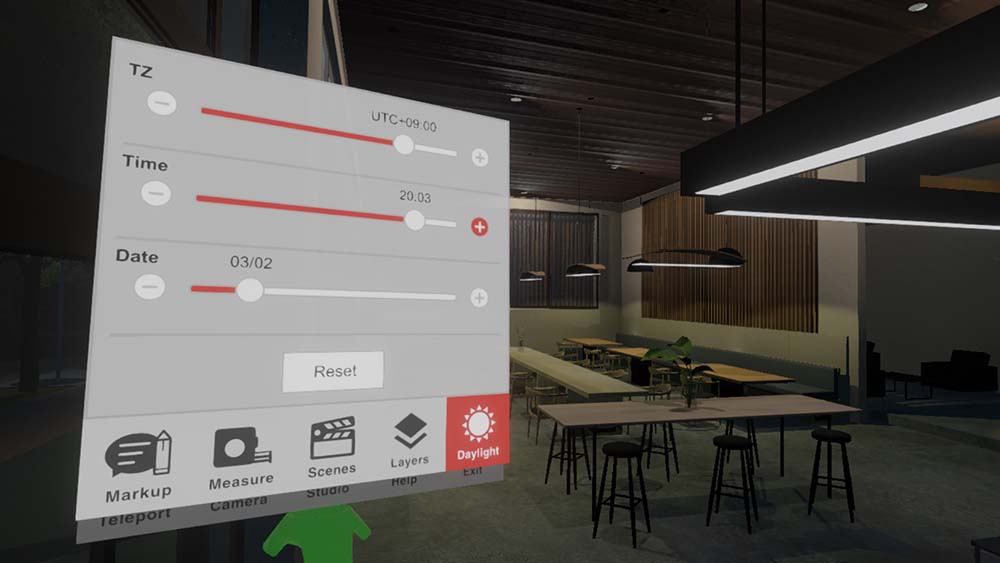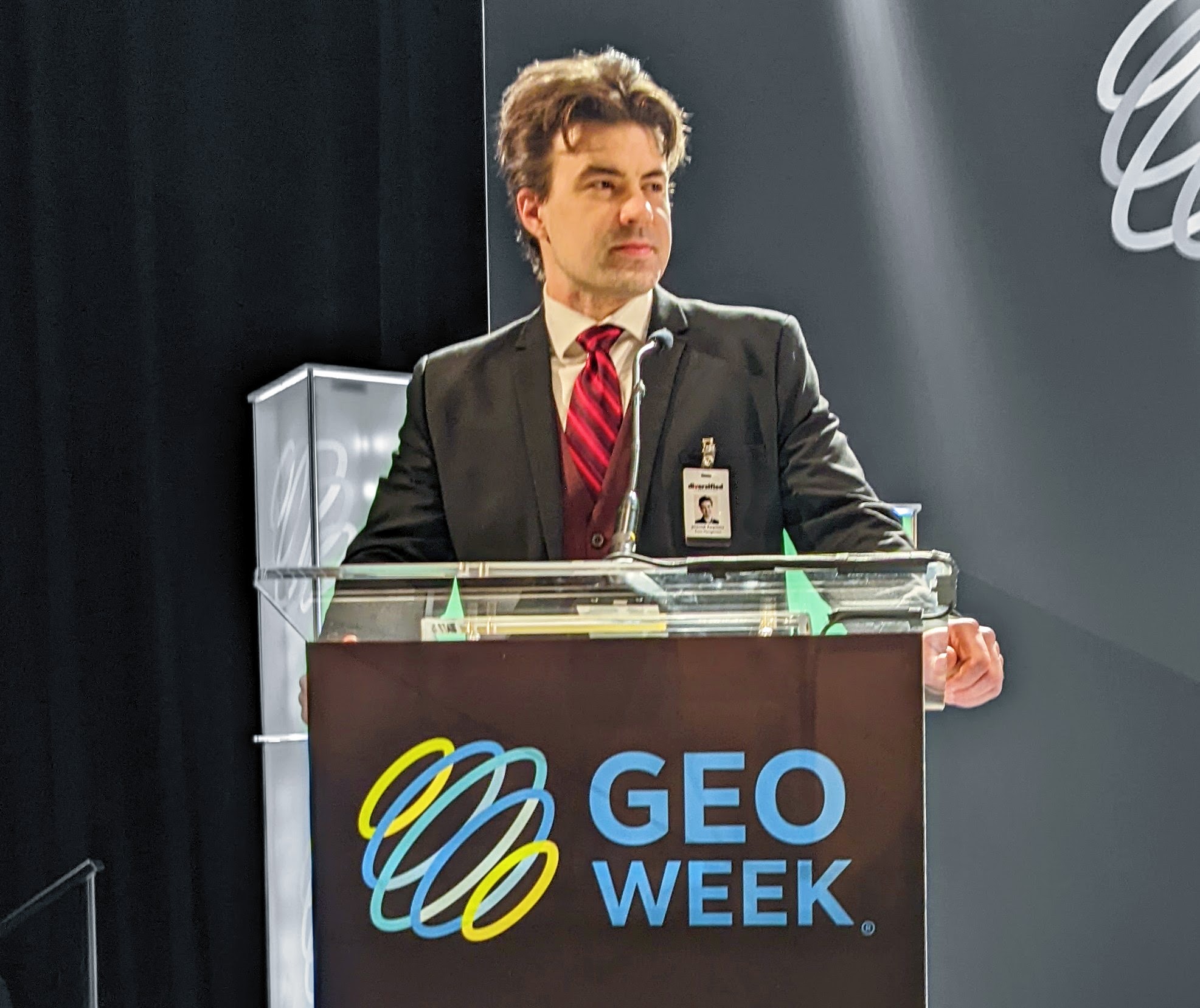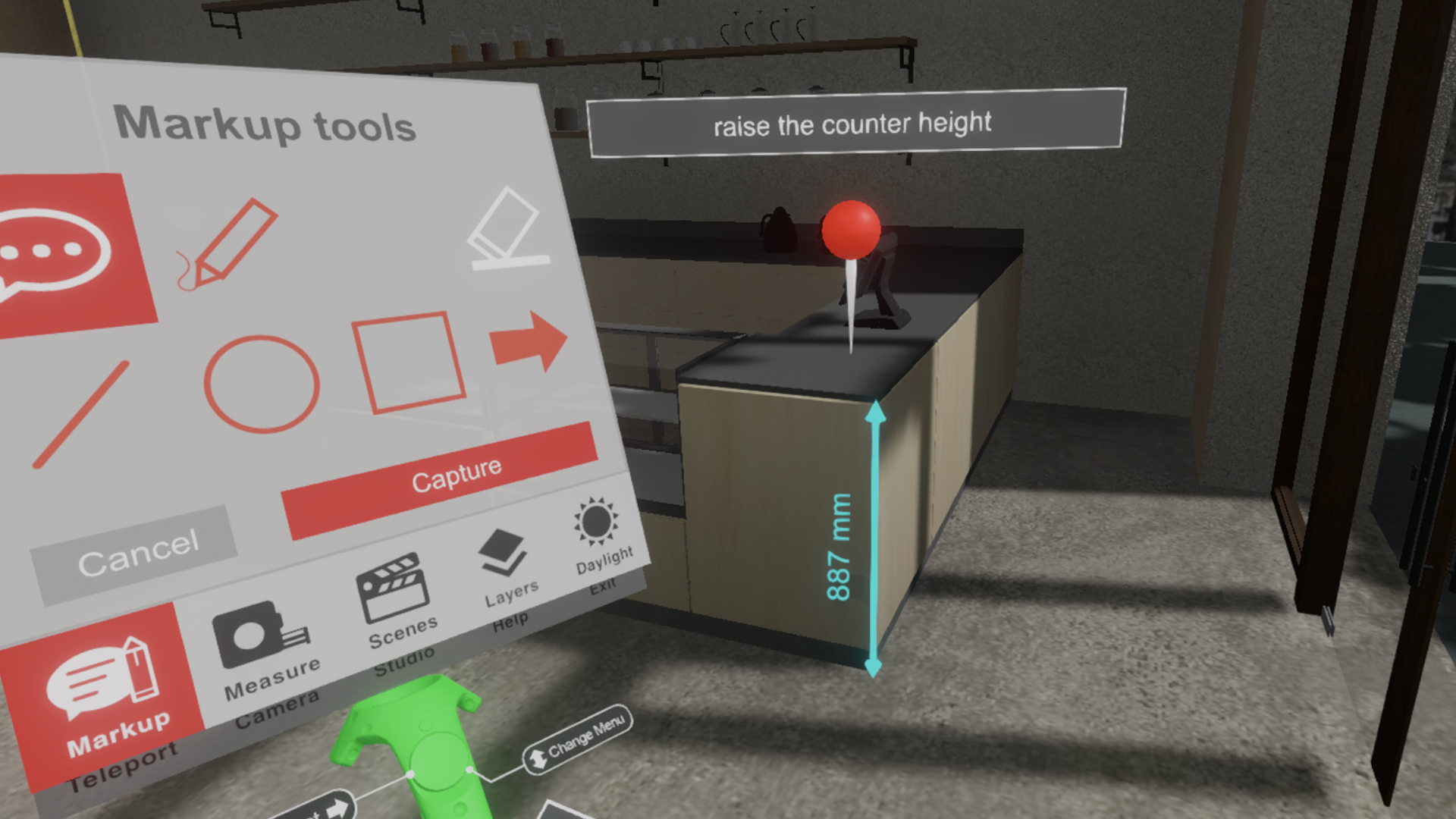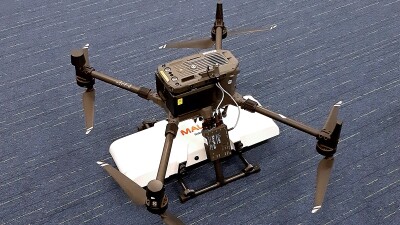VR technology has shifted how AEC professionals of all types are communicating the visual aspect of a variety of tasks and processes throughout their workflows. VR can enable better design and increase productivity, but actually enabling these efficiencies had proven to be a challenge for many professionals. A new tool from DVERSE Inc. is designed to eliminate many of these challenges and open up entirely new value propositions for the technology.
DVERSE has announced the release of SYMMETRY, a VR workflow solution tool for AEC professionals. The SYMMETRY VR workflow solution tool is designed to integrate into a designer’s workflow to accelerate the validation process with greater accuracy and sense of scale. With SYMMETRY, designers can review, revise, and validate their designs with ease, allowing for a smooth workflow and improved communication.
SYMMETRY can do everything from import 3D CAD files to allow users to experience them at 1:1 scale in VR, add markups and annotation to clarify design revisions as well as accelerate the validation process. We wanted further explore what these benefits can mean for AEC professionals, so we caught up with Ryan Neil from DVERSE. He explained what the biggest challenges are with VR right now, what it means to “walk into” a design in VR, the competitive advantage that can be gained from adopting the technology now and much more.
Jeremiah Karpowicz: DVERSE is dedicated to the creation & expansion of the VR market, but what can you tell us about the VR market as it exists right now? Generally speaking, what kind of interest and enthusiasm is there for this type of technology, and how will SYMMETRY impact the interest in VR?
Ryan Neil: VR hardware quality continues to improve as prices are falling, and as such, the market has moved beyond early adopters to a broader user base. This is great for the VR market since higher demand for VR hardware will continue to put pressure on hardware makers to improve things like resolution and tracking while the consumer market will force makers to keep prices low.
From the very beginning, we’ve seen high enthusiasm from the design and construction industries. We’ve exhibited SYMMETRY at architecture, design and construction events around the world, and we’re always surprised by the number of visitors that come to us and want to learn more about how to integrate VR into their workflow.
Does VR technology allow AEC professionals to perform tasks or complete projects in a whole new way? What’s the real value proposition of and for the technology?
Yes, absolutely, for several reasons.
First of all, designs can be validated in VR at 1:1 well before construction begins. This was heretofore unheard of. Even with a beautiful maquette or a photo-realistic 3D rendering, there is no substitute for experiencing a design at 1:1 from within, particularly for clients that may find it difficult to imagine the scale of a space when looking at a 3D model on a flat screen. Additionally, the ability to review, revise, and validate designs in VR eliminates unnecessary construction costs before construction begins, which becomes increasingly significant on larger construction projects.
In VR, AEC professionals and their clients aren’t just viewing a space at 1:1, they’re experiencing it.

What’s one of the biggest challenges AEC professionals deal with when it comes to the adoption of VR software?
VR headsets are still considered by some to be in their second generation. They’re a bit bulky, uncomfortable for long sessions, and the image quality isn’t as high as we’ve become accustomed to with modern rendering software. Furthermore, AEC professionals in general have yet to figure out the most effective way to incorporate VR into their existing workflow.
These are all minor road bumps that are being overcome now, if not in the very near future with advancements in VR headset technology and more experience with incorporating VR into existing workflows within the industry.
How have you managed to help users understand what it means to adopt and utilize your solutions in order to provide real-world benefits?
The greatest thing about VR is the ability to experience a proposed design prior to construction. This merit also makes it difficult to explain to professionals how impactful VR can be to their work without them actually experiencing it for themselves. We provide demonstrations for SYMMETRY at events all over the world, and from the moment visitors put on the headset there is no doubt in their mind as to the importance of VR.
SYMMETRY allows architects and designers to “walk into” their designs with a peerless, high-quality VR experience at 1:1 scale. What kind of opportunities do you think will be opened up for architects and designers on account of this capability?
Enhanced communication.
Reviewing a proposed design with a client in VR at 1:1 puts everybody on a level playing field, and as such understanding is greatly improved. Clients know what they want, but it can be difficult for them to imagine a design when built while looking at 2D floor plans or even 3D models on a flat screen. Allowing clients to experience a proposed design opens up a two-way dialogue and initiates a more effective review and feedback process that ultimately leads to higher satisfaction for both sides. Enabling efficiencies in the design and construction process reduces the overall cost of projects (in some cases quite significantly) and time needed to execute.

You mentioned that you don’t want to sell a “viewer” tool, which is incredibly important since some people can get caught up in that aspect of the tool. How have you been able to get people who are just thinking of it as this “viewer” tool to change their perspective?
The direction of SYMMETRY is largely informed by our users. Many people using our tool have told us that from the first time they put on the VR headset they knew there was potential that extended well beyond just viewing, and have provided us with a mountain of ideas on how to continue to advance the product. For people that are new to VR, sharing concrete examples for how professionals can utilize VR beyond viewing via case studies or interviews is quite effective at changing their perspective.
Though we’ve pushed SYMMETRY beyond a “viewer” tool we’re not interested in creating a VR design tool either. Through conversations with people in the industry and extensive testing of other VR products we’ve come to realize that designing in VR isn’t ideal. Designers would rather work on designs using CAD software as it’s much faster and more accurate. With that in mind, we are aiming to create a VR tool that will accelerate the design review process and facilitate a smooth workflow between CAD and VR.
How does deep-learning play a role in what it means to effectively utilize VR solutions, and how will those capabilities be a part of SYMMETRY?
There are so many ways in which deep-learning and AI can enhance VR solutions. For example, integrating voice commands to allow professionals to intuitively open files, switch between tools, adjust settings like daylight and time zones, and even change materials and lighting will greatly accelerate the VR workflow process and make it easy for anyone, regardless of VR experience, to jump into VR. This alone is a very powerful tool that will largely remove the need to learn how to use controllers and learn commands while utilizing the most effective tool we possess: natural language.
We’ll be sharing more details in the near future as to the underlying technology that will allow us to effectively implement voice commands as well as other functionality that utilizes deep-learning and how these tools will enhance SYMMETRY.
Do you think the adoption of this technology represents a competitive advantage for the organizations that are and will be utilizing it? If so, how will that competitive advance be realized?
Certainly, any tool that allows professionals to more effectively communicate internally and with their clients, accelerate the design and build process, and cut costs can provide a huge competitive advantage. Eventually, VR will become as much of an industry standard as CAD software, and as such, the competitive advantage will be who has the most experience and can most effectively utilize VR for workflow and proposing designs.

What would you say to someone who is excited about what SYMMETRY might be able to do for their organization, but think the challenges associated with adopting the solution will be too much for their organization to overcome?
The challenges inherent in integrating SYMMETRY into an organization are almost non-existent in comparison to the immense advantages in adopting a VR workflow solution tool. We’re not looking to replace existing workflows, merely to enhance them, and as such the barrier to entry is low. We’ve built SYMMETRY so that anyone, regardless of VR experience or lack thereof, can jump into a VR headset and experience their designs in an intuitive and user-friendly way.
Regardless of the size of the organization, there are constant communication challenges to overcome, and at the core of SYMMETRY is the philosophy that VR is a tool to enhance communication and therefore bridge the gap between ideas and reality.
For more information on SYMMETRY please visit: http://symmetryvr.com/






